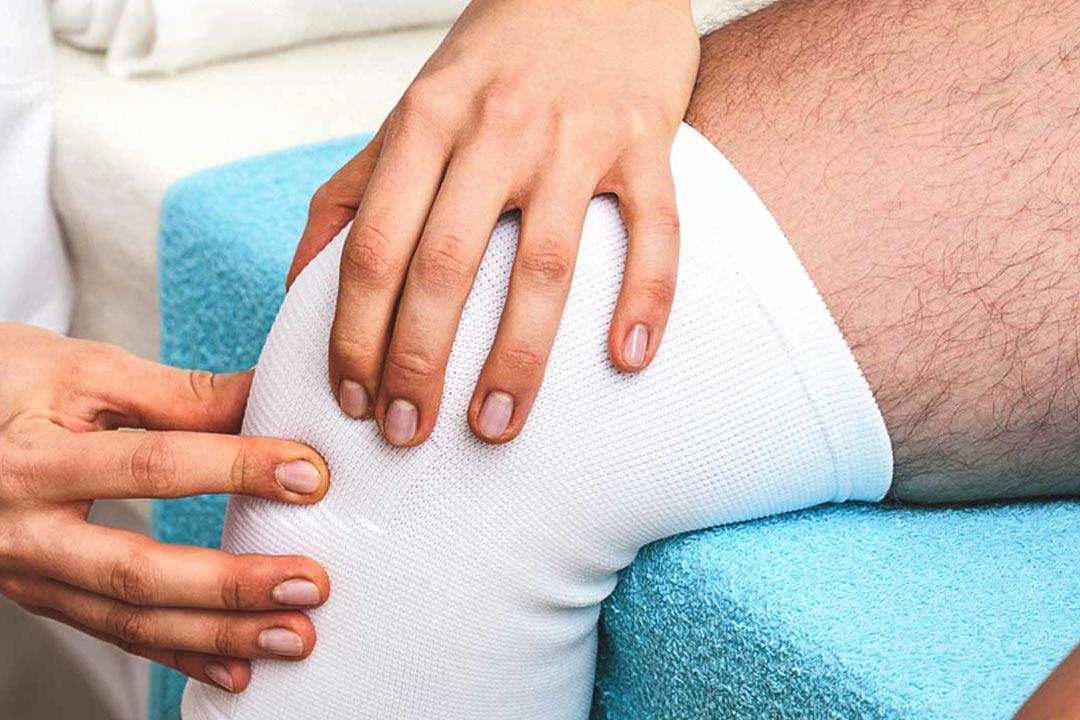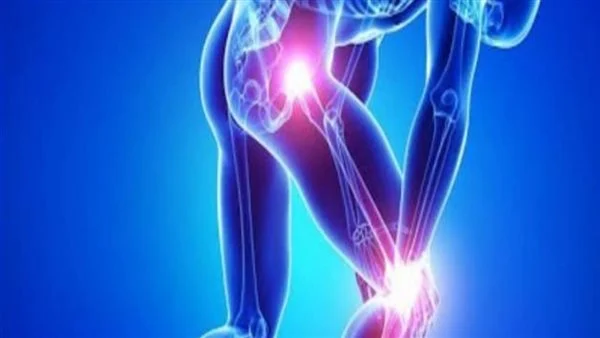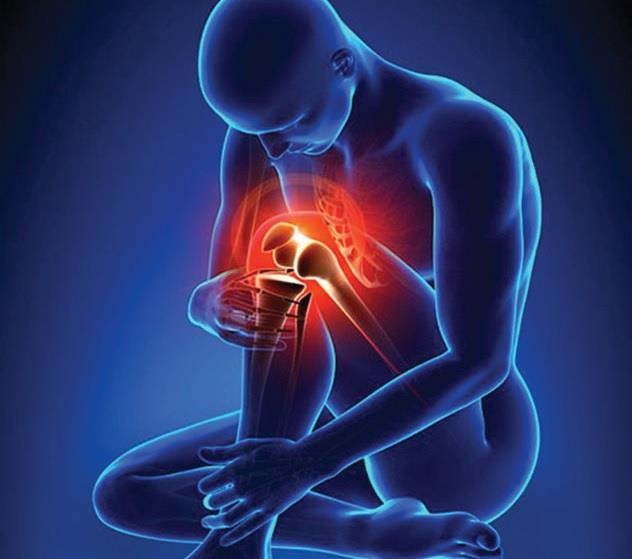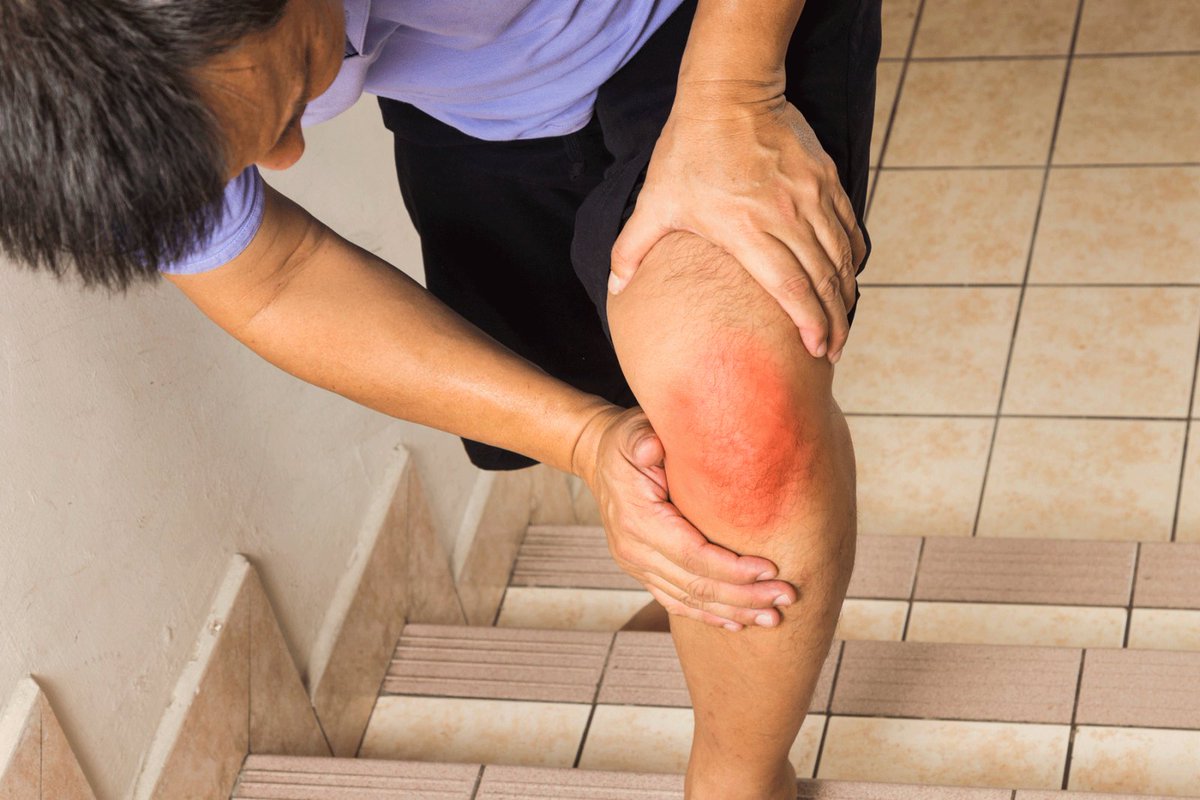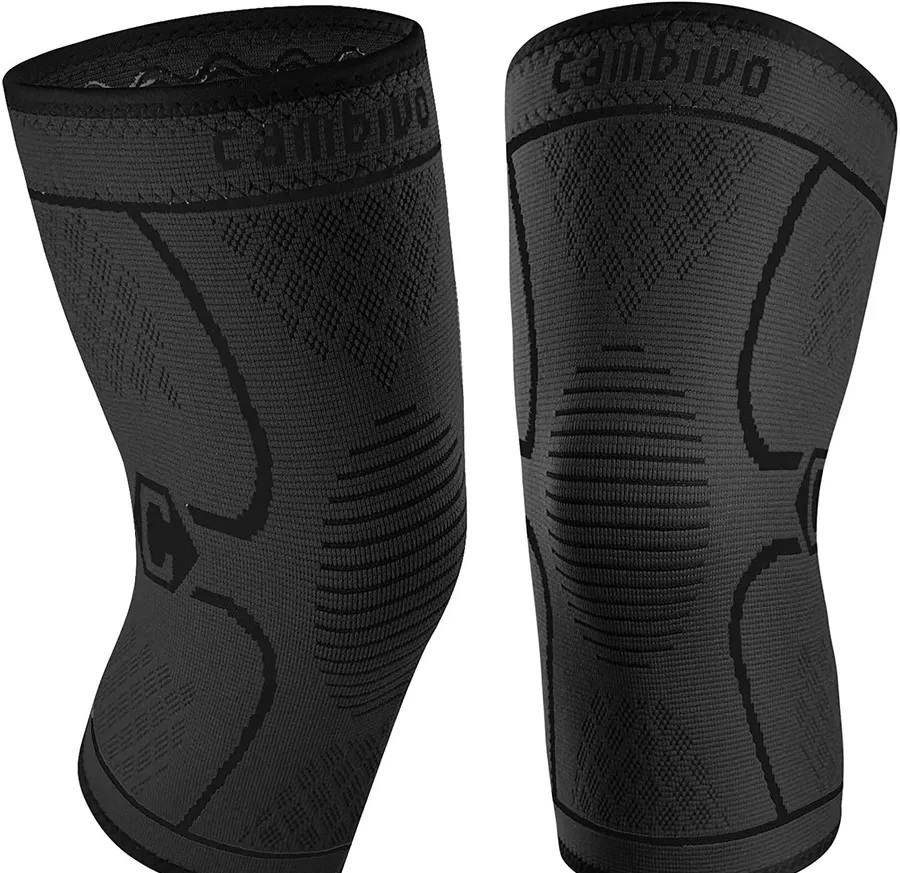How do you get rid of sciatic nerve pain? And what are the causes of its appearance?

Getting rid of sciatic nerve pain
Sciatica, also known as inflammation of the sciatic nerve, is a common condition that causes sharp pain and is often accompanied by several bothersome symptoms. This pain is characterized by a feeling of tingling and pulling in the hip, thigh, and lower leg. If you are suffering from this condition, here are some tips and measures that may help relieve sciatic nerve pain:
Consult your doctor: Before you start any type of treatment or exercises, it is essential to consult with your doctor or healthcare professional. The pain you are experiencing could be due to various causes and should be accurately diagnosed before any action is taken.
Rest: You should give your body periods of rest to relieve pressure on the sciatic nerve. You can use aids such as soft and comfortable cushions to support the back and hip area when sitting and sleeping.
Heating and cooling: Heating and cooling can be used to relieve sciatic nerve pain. Use an ice pack initially to reduce inflammation, then use a warm pad on the area of pain to relieve tension and increase blood flow.
Physical therapy: Physical therapy can be effective in strengthening the muscles of the back and abdomen and improving the flexibility of the spine. A physical therapist will design a customized exercise program for your condition to improve your posture and reduce pain.
Medication: The doctor may prescribe medications to alleviate pain and inflammation. These medications may include non-steroidal anti-inflammatory drugs and muscle relaxants, among other pain-relief drugs.
Healthy diet: You should pay attention to your diet and ensure you consume healthy foods that help reduce inflammation and support the health of the sciatic nerve. Eat foods rich in fiber, fruits and vegetables, and fatty fish.
Rehabilitative exercises: Rehabilitative exercises can help strengthen the muscles surrounding the sciatic nerve and increase the flexibility of the spine. These exercises should be performed under the supervision of a qualified medical professional.
Weight care: If you are overweight, losing weight can relieve pressure on the sciatic nerve and reduce pain.
Radiation therapy: In some cases, the doctor may suggest radiation therapy to relieve pain and inflammation in the sciatic nerve.
Surgery: Surgery is a last resort if other treatments are not effective. Surgery may involve removing inflamed tissues or freeing the sciatic nerve from pressure.
In conclusion, the patient must cooperate with their doctor and follow medical directions carefully. If sciatica is diagnosed early and the appropriate treatment is followed, the chances of getting rid of the pain and improving the quality of life are greater.
What are the symptoms of sciatica in the right leg?
Sciatica, also known as sciatic nerve inflammation, is a condition that affects the sciatic nerve, which extends from the back area to the leg and foot. Symptoms of sciatica in the right leg can appear similarly to those in any other part of the body. Here is an explanation of the symptoms that may appear in cases affecting the right leg:
- Sharp Pain: Severe pain is one of the most prominent symptoms of sciatica. The pain can range from mild to severe and may be constant or worsen with physical activity or sitting for long periods.
- Tingling and Tightness: You may feel tingling or tightness in the area of the right leg, which can be accompanied by a sensation of tickling or burning.
- Leg Muscle Weakness: In some cases, sciatica can lead to leg muscle weakness and difficulty in lifting the leg or foot.
- Numbness: The pain in the right leg may be accompanied by a feeling of numbness or loss of sensation in the leg or foot.
- Back Pain: The pain may extend from the hip area to the lower back, and this pain may be an additional source of discomfort.
- Symptoms Worsen with Activity: Many people notice that sciatica symptoms worsen with physical activities or when sitting for long periods.
- Balance and Control Difficulties: Due to the pain and muscle weakness in the right leg, you may have difficulty maintaining balance and controlling your movements.
- Numbness: The pain may be accompanied by numbness in the right leg, indicating nerve compression. Hip and Pelvic Pain: A person may feel pain in the hip and pelvic area in addition to the leg and foot.
Important Reminder: If you are experiencing any of these symptoms or suspect the presence of sciatica, you should consult a doctor or healthcare professional. Early diagnosis and proper treatment can help alleviate pain and improve the quality of life. Sciatica treatment depends on the severity of the condition and may include therapies such as physical therapy, medications, radiation therapy, and in some cases, surgery.
Does sciatica pain increase at night?
Yes, sciatica may increase at night in many cases. Nighttime pain is one of the common symptoms of this condition and can have a significant impact on the quality of sleep and the daily life quality of people suffering from it. In this article, we will discuss the potential causes of increased pain at night in cases of sciatica and some strategies that can be adopted to alleviate this pain.
Possible reasons for increased pain at night in cases of sciatica:
- Improper body posture during sleep: Sleeping on your back or side at an inappropriate angle can increase pressure on the sciatic nerve, leading to increased pain at night.
- Swelling at night: In some cases, swelling and inflammation may increase at night, causing increased pain. Symptoms can be exacerbated by the accumulation of fluids around the sciatic nerve.
- Excessive physical activity during the day: If you engage in strenuous physical activities during the day, this can increase pressure on the sciatic nerve, and when you rest at night, the pain becomes more pronounced.
- Stress and anxiety: Psychological stress and anxiety can increase the severity of pain and make it more noticeable at night. Anxiety can cause sleep disturbances and make the pain more difficult to manage.
- Body temperature fluctuations: Changes in body temperature during the night can increase the intensity of pain. We normally experience a natural drop in body temperature at night, and this can affect the sciatic nerve and cause increased pain.
Strategies to alleviate pain at night:
- Use sleeping aids: Tools such as special pillows for back and knee support can help maintain a healthy sleeping posture.
- Perform rehabilitative exercises: Exercises designed to strengthen back and abdominal muscles can improve your posture and reduce pain.
- Physical therapy: Physical therapy professionals may suggest specific techniques and exercises to relieve pain and increase flexibility.
- Nonsteroidal anti-inflammatory drugs (NSAIDs): Medications like ibuprofen can reduce inflammation and pain.
- Avoid strenuous physical activities before sleep: Try to avoid engaging in strenuous exercise before bedtime to allow the body to relax.
- Relaxation and stress management: Practicing relaxation techniques such as meditation and deep breathing can reduce stress and increase comfort.
- Massage: Massage can help relax tense muscles and improve blood flow to the affected area.
In conclusion, if you are suffering from increased pain at night due to sciatica, you should consult your doctor or a healthcare professional for an accurate assessment and advice tailored to your condition. Sometimes, specialized medical intervention may be necessary to manage the pain effectively.
Does sciatica heal on its own?
Sciatica, also known as inflammation of the sciatic nerve, is a condition that causes sharp pain and tension in the sciatic nerve, which extends from the back area to the leg and foot. The possibility of sciatica healing on its own depends on several factors, including the main cause of the condition and its severity.
Potential for Spontaneous Recovery:
While there are cases where pain can gradually improve and heal on its own over time, this is not always the case. Many factors affect the possibility of spontaneous recovery from sciatica, which include:
- Severity of the condition: If the pain is severe and persistent, the chance of spontaneous recovery is lower than in cases of less severe pain.
- Therapeutic intervention: Effective treatment, such as physical therapy or anti-inflammatory medications, can help alleviate pain and improve the condition. Early and appropriate intervention can increase the chances of recovery.
- Underlying causes: If sciatica is due to causes that require surgical intervention such as a large herniated disc or severe spinal stenosis, spontaneous recovery may be difficult.
Care and Treatment:
If you suffer from sciatica, it is important to consult your doctor or healthcare professional to evaluate your condition and determine appropriate treatment. Providing early care and the correct therapeutic intervention can be crucial for alleviating pain and improving the overall situation. Treatment options may include physical therapy, medications, and surgical interventions in serious cases.
In summary, the possibility of sciatica healing on its own depends on many factors, including the cause of the condition and its severity and the available treatment. It is important to seek appropriate healthcare and adhere to a treatment plan recommended by a doctor to increase the chances of recovery and improve the quality of life.
Is sciatica in the right leg or the left leg?
Sciatica, also known as inflammation of the sciatic nerve, is a condition that affects the sciatic nerve that extends from the back area to the leg and foot. This inflammation can occur in either leg, including the right or left leg. In this article, we will discuss the differences between sciatica in the right leg and the left leg and how to deal with each case.
Sciatica in the Right Leg vs. the Left Leg:
- Symptoms: The symptoms can be similar in both the right and left leg. Acute pain, tingling, and pulling in the hip, thigh, and lower leg can be common in both cases. However, the intensity of the pain and additional symptoms can vary from person to person.
- Causes: The causes leading to sciatica in either the right or left leg can be similar, such as a herniated disc or inflammation of the sciatic nerve due to infections or injuries. There may also be factors such as spinal stenosis or cysts in the sciatic nerve.
- Treatment: The treatment for sciatica in either the right or left leg can include a variety of options. Physical therapy involves exercises to strengthen the muscles and improve the flexibility of the spine. Medications such as pain relievers and non-steroidal anti-inflammatory drugs can be used to alleviate pain and inflammation. In some cases, surgical intervention may be required if the condition does not respond to other treatments.
- Self-Care: Regardless of which side is affected by sciatica, there are general measures that can be taken to improve the condition. This includes rest, using back and leg support devices, refraining from strenuous physical activities, and maintaining a healthy weight.
- Consulting a Doctor: It is very important to consult a doctor or healthcare professional for an accurate assessment and diagnosis. A doctor can determine the cause of sciatica and prescribe the most appropriate treatment based on your personal condition.
Sciatica can affect either the right or left leg, and the diagnosis and treatment depend on the cause and severity of the condition. It is important to understand that this condition can be successfully managed through medical evaluation and appropriate treatment, whether it is on the right or left side of the body.
Does walking help treat sciatica?
Walking is a simple and effective activity that can play an important role in treating sciatica, a condition that affects the sciatic nerve and causes pain and tension in the back, leg, and foot. Including walking as part of a treatment routine and self-care can significantly contribute to pain relief and overall improvement of the condition. In this article, we will look at how walking affects sciatica and how it can be included in a treatment plan.
Benefits of Walking in Treating Sciatica:
Strengthening Muscles: Walking strengthens the core muscles in the back, abdomen, and legs. This can help support the spine and improve its stability, reducing pressure on the sciatic nerve and relieving pain. Improving Flexibility: Regular walking can increase the flexibility of muscles, tendons, and ligaments. This can contribute to better joint movement and relief from tension. Enhancing Blood Flow: Walking boosts blood flow to affected areas, helping to reduce swelling and provide oxygen and nutrients to the damaged tissues. Weight Reduction: If you are overweight, losing weight can reduce the pressure on the sciatic nerve and alleviate pain. Psychological Improvement: Walking outdoors can be calming for the mind and contribute to reducing stress and anxiety, which helps improve pain tolerance.
Tips for Benefiting from Walking in the Treatment of Sciatica:
Start Gently: If you are not accustomed to walking, start gently and increase the exercise gradually. Do not strain yourself or increase the pain. Walk Regularly: Maintain a regular walking schedule, aiming for at least 30 minutes of walking five times a week. Focus on Proper Walking: Keep the correct body posture while walking. Lift your head, keep your shoulders straight, and use your arms in a natural motion. Muscle Massage: After walking, massaging the tense muscles can help to relieve tension and increase relaxation. Medical Consultation: Before starting any new exercise program, it is best to consult with your doctor or a physical therapy professional to ensure that walking is suitable for your condition and does not interfere with other treatments.
If you suffer from sciatica, walking can be a beneficial part of your treatment and self-care plan. It can help in strengthening muscles, improving flexibility, enhancing blood flow, and improving pain endurance. With a commitment to a regular program and monitoring progress with a healthcare professional, walking can aid in improving the quality of your life and reducing the pain associated with sciatica.
What are the Causes of Sciatica?
Sciatica, also known as sciatic nerve inflammation, is a medical condition that causes sharp pain and tension in the sciatic nerve, which extends from the lower back area through the hip and down to the leg and foot. Sciatica can be extremely painful and affect the quality of life. To understand more about what causes the appearance of sciatica, let’s look at the potential factors contributing to this condition:
- Herniated Disc (Slipped Disc):
One of the primary causes of sciatica is a herniated disc. This slippage occurs when the intervertebral disc, situated between the spinal vertebrae, slips out of place and presses on the sciatic nerve. This leads to irritation and inflammation, resulting in sharp pain in the back, leg, and foot.
- Inflammation of the Sciatic Nerve:
Inflammations of the sciatic nerve can be another reason for the emergence of sciatica. These inflammations may be due to an infection or chronic inflammation, causing swelling and pain in the area surrounding the sciatic nerve.
- Injuries and Trauma:
Acute traumas or injuries in the area of the sciatic nerve can cause inflammation and disc slippage, leading to sciatica. These injuries may occur as a result of car accidents or extreme sports.
- Cysts on the Sciatic Nerve:
Cysts or small tumors may grow on or around the sciatic nerve, causing pressure on it and leading to sciatica. These cysts may be hereditary or result from the formation of small masses within the body.
- Spinal Stenosis:
Excessive narrowing of the spinal canal, which houses the sciatic nerve, can lead to compression on the nerve and the appearance of sciatica. This narrowing may be a result of aging or changes in the spinal structure.
- Genetic Factors:
Some forms of sciatica may be due to genetic factors. If you have a family history of this condition, you may be more susceptible to developing it.
- Lifestyle and Environmental Factors:
Lifestyle factors such as obesity and lack of physical activity can increase the likelihood of developing sciatica. Carrying extra weight can increase the pressure on the sciatic nerve and make the pain more intense.
Sciatica is a painful condition that can affect the quality of life. If you are experiencing symptoms of sciatica, it is important to consult a doctor or healthcare professional for assessment to identify the main cause of the condition and prescribe the appropriate treatment. Treatments for sciatica may include physical therapy, anti-inflammatory medications, and in serious cases, surgical intervention.
Can Massage Relieve Sciatica Pain?
Massage is an ancient and effective technique used for pain relief and increasing relaxation in the body. Many people turn to massage as a means to alleviate the pain of sciatica, also known as sciatic nerve inflammation. In this article, we will explore the relationship between massage and sciatica, and whether massage can help relieve pain and improve the condition.
Sciatica: A Quick Overview:
Sciatica is a condition that occurs when the sciatic nerve, which extends from the back through the hip and down to the leg and foot, is compressed or irritated. This compression or irritation can cause sharp pain and tension in the body and can be due to several reasons such as herniated discs, inflammation, and injuries.
Benefits of Massage in Treating Sciatica:
Although massage does not directly cure sciatica or lead to complete healing, it can have a positive effect on alleviating pain and increasing comfort for individuals suffering from this condition. The potential benefits of massage in treating sciatica include:
- Relieving Tense Muscles: Massage can help ease tension in the muscles surrounding the sciatic nerve, which can reduce pressure on the nerve and associated pain.
- Increasing Blood Flow: Massage can increase blood flow to the affected areas, promoting tissue healing and reducing swelling and inflammation.
- Improving Psychological Well-being: Massage helps increase the secretion of relaxation hormones like endorphins, which can improve mood and reduce stress and psychological anxiety resulting from pain.
- Enhancing Quality of Sleep: Chronic pain can affect your sleep, and massage can help improve sleep quality by relieving pain and increasing comfort.
Important Tips When Resorting to Massage for Sciatica Treatment:
- Consult Your Doctor: Before you start massage sessions, you should consult your doctor to ensure that massage is appropriate for your condition and does not conflict with other medical treatments you are receiving.
- Choose a Professional Masseur: Ensure you choose a certified professional masseur with experience in dealing with chronic pain and neurological conditions.
- Set Goals: Discuss your goals with your masseur, whether it’s pain relief or general relaxation.
- Avoid Excessive Pressure: Avoid deep massage or excessive pressure on pain areas, as this can increase nerve irritation.
If you are suffering from sciatica, massage may be a useful way to alleviate pain and increase comfort. However, massage should be done cautiously and considered an addition to the overall treatment plan prescribed by your doctor. Always remember that massage cannot be a substitute for proper medical treatment, and you should always consult a medical professional before starting any new treatment for your specific case of sciatica.


